"Do you see the absurdity of what I am? I can't even express these things properly because I have to - I have to conceptualize complex ideas in this stupid limiting spoken language! But I know I want to reach out with something other than these prehensile paws! And feel the wind of a supernova flowing over me!" -Ronald Moore
Well, you probably don't actually want to feel the wind of a supernova flowing over you; trust me on this.
But to find one for yourself, that's definitely within your reach, if you know where to look.
Supernovae come in a few distinct types, two of which are far more common than others.
There are Type Ia supernovae, the most common type of supernova in our own galaxy. These occur when a white dwarf star -- either from mass siphoning, accretion, or mergers -- reaches above a certain mass threshold. When this occurs, the atoms at the center of the stellar corpse can no longer remain stable, and a runaway nuclear explosion occurs. The result -- as we've seen relatively recently in our galaxy -- is a fantastic supernova explosion that destroys the previously existing star!
But these types of supernovae -- the Type Ia -- can occur anywhere where white dwarf stars are located. Given that these are the second most common stellar-type object (behind red dwarf stars) in the Universe, at least for the next few hundred billion years (after which they'll eventually overtake red dwarfs), predicting where the next one will occur is a herculean task, well beyond what we know how to do.
But there is another type.
When ultra-massive stars, or stars at least about eight times as massive as the Sun, exhaust the last of their nuclear fuel, the core of that star begins to collapse. Normally -- and this happens in stars like the Sun -- the forces between particles in the central region of the star are too strong for even gravity to overcome. This is true for nearly all classes of main-sequence star; our Sun is a run-of-the-mill G-class star.
But some stars are so massive -- all of the main-sequence O-stars and the brightest of the B-stars -- that the Pauli Exclusion Principle is insufficient to prevent core collapse, and this leads to a runaway reaction.
In the center of these stars, the core does in fact collapse, producing either a neutron star or black hole at the center, while the outer layers of the star are destroyed in a fantastic Type II supernova explosion!
But this is great, because it tells us something: if you want to find one of these Type II supernovae, you're way more likely to get one if you look at a young, star-forming region of space!
We have a few of these star forming regions in our own galaxy, of course, perhaps the most famous of which is the Great Orion Nebula, prominently visible during the winter months.
But you don't mine for gold in a tiny vein when there are giant ones to go after, and you don't look for supernovae in HII-regions of relatively quiet galaxies when there are places in space so active that the entire galaxy in question is a star-forming region!
The easiest way to get a galaxy that forms stars this rapidly is when two relatively equal-sized galaxies merge. The gravitational interaction causes large amounts of the gas in both progenitor galaxies to contract down and form new stars. When this happens, the star formation rate can become tens, hundreds or (possibly) even thousands of times as great as it is in our own Milky Way.
While the vast majority of stars (99.9%+) created will be too low in mass to go supernovae, you don't really care about that when you're creating millions (or hundreds of millions) of stars. Eventually, one of them is going to blow.
If you hear about it, and you know where to look, you can, of course, see it for yourself.
But if you're really lucky, you can be the one looking at the right time to discover it! In fact, amateur astronomer supernova hunters can, individually, discover dozens of new supernovae on their own. The best place to look? You guessed it: merging and interacting galaxies!
These are the cosmic hotbeds of star formation, and hence they're also the most prolific cosmic supernova factories. But looking at any one galaxy in particular, just once, isn't going to tell you very much. (Even if it's one of the most active galaxies in the entire known Universe.)
That's because what you need to do is find a galaxy and compare it to earlier images of that same galaxy. It's only when you get an unexpected brightening -- a rapid, extreme brightening -- that rises and falls over the span of many days, that you've got a candidate for a supernova.
And if you find one, that only means you've got a candidate supernova. For confirmation, you need spectroscopic follow-up, and that almost always requires the attention of a professional.
This Hubble/Spitzer composite image shows the mammoth galaxy NGC 6240, an ultraluminous galaxy in the process of a major merger. Recently, astronomy outreach expert Adam Block took this spectacular wide-field image of this galaxy. The sight is spectacular, and (like for all images here) you can click for a full-resolution image in all its majesty.
Even though this galaxy is certainly undergoing higher-than-average rates of star-formation, it certainly isn't obvious that anything out-of-the-ordinary has happened here.
But something's worth checking out. Let's take a look at the highest-resolution Hubble image available of this galaxy, and in particular, I want you to focus on the star-forming region I've outlined in orange, below.
 Image credit: NASA, ESA, the Hubble Heritage (STScI/AURA)-ESA/Hubble Collaboration, and A. Evans (University of Virginia, Charlottesville/NRAO/Stony Brook University).
Image credit: NASA, ESA, the Hubble Heritage (STScI/AURA)-ESA/Hubble Collaboration, and A. Evans (University of Virginia, Charlottesville/NRAO/Stony Brook University).
This region is one of the hotbeds of star-formation. I mean, the whole galaxy is, but the blue reflection nebula tells you that there are some extraordinary hot, blue stars in there, as well as some neutral gas/dust, which reflects the light from those hot, blue stars.
The thing is, that image is from years ago. Let me take you inside Adam Block's image, now, and see if you can find anything interesting.
Look hard, detectives. Let me help you out, with a little zooming, cropping, and a couple of arrows.
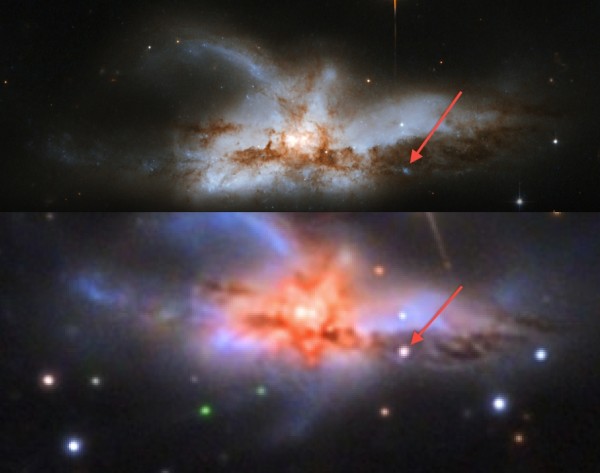 Image credit: Adam Block/Mount Lemmon SkyCenter/University of Arizona (bottom), NASA / ESA / Hubble Heritage Team / A. Evans (top).
Image credit: Adam Block/Mount Lemmon SkyCenter/University of Arizona (bottom), NASA / ESA / Hubble Heritage Team / A. Evans (top).
That has got to be a supernova! It's almost definitely a Type II, based on where it's happening, and even though it's probably a rather uninteresting one now that it's almost certainly on the decline (I believe the image dates from April 11th), if you happen to be a professional out there just twiddling your thumbs with clear skies and no targets of interest, take a spectrum of this and give Adam Block, who's created some of the most spectacular astroimages I've ever seen, his first supernova discovery!
And if you happen to be looking -- with the right equipment, in the right place, at the right time -- you, too, could find one of these for yourself!


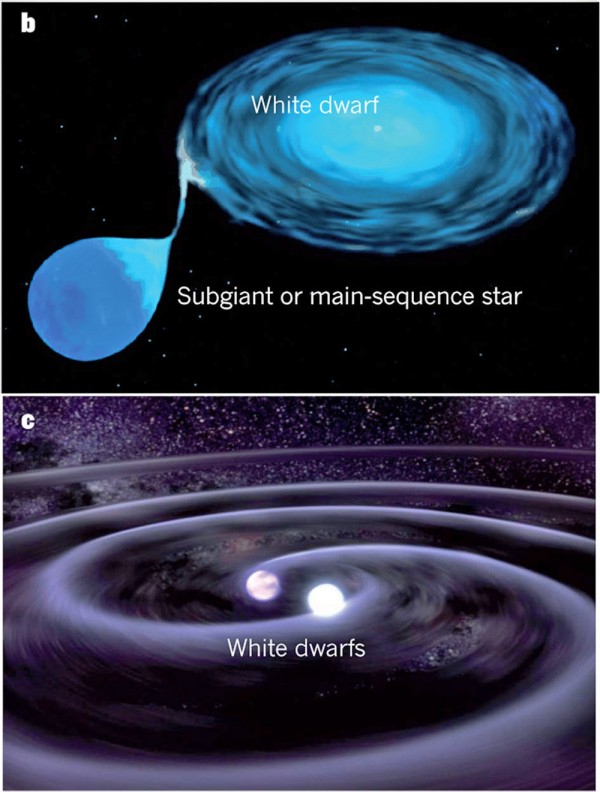

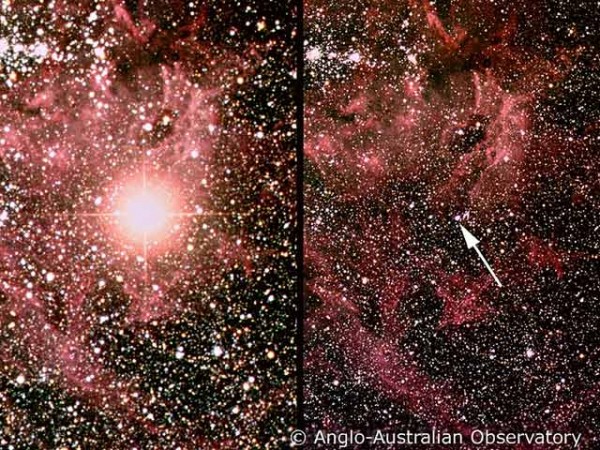
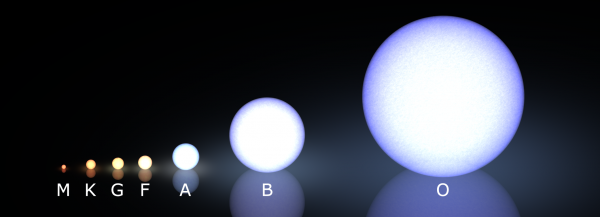
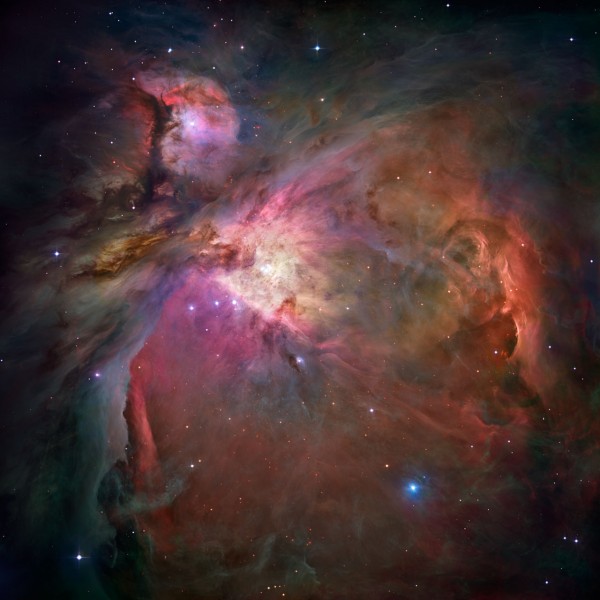
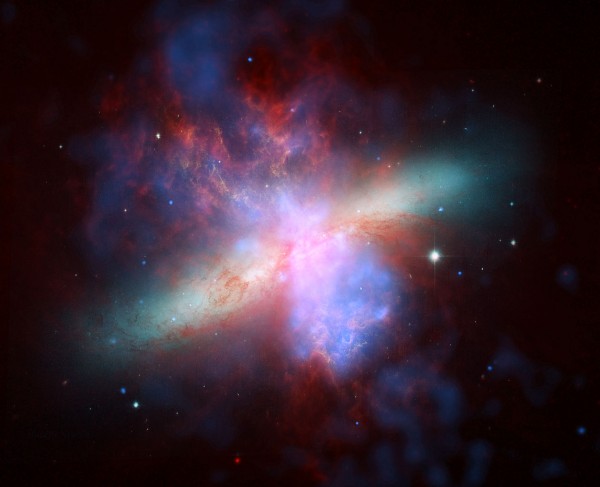
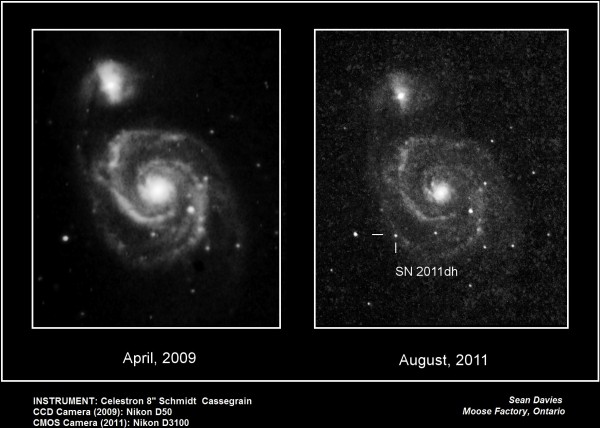

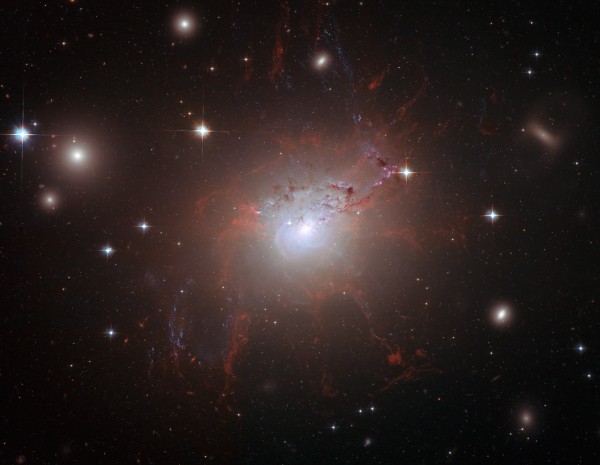
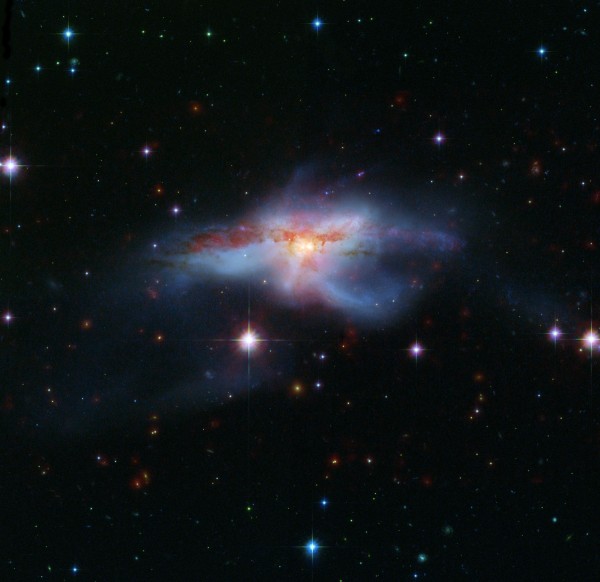
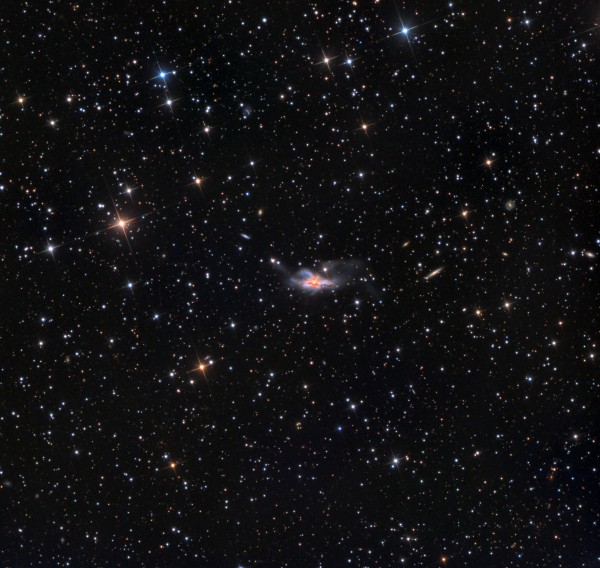
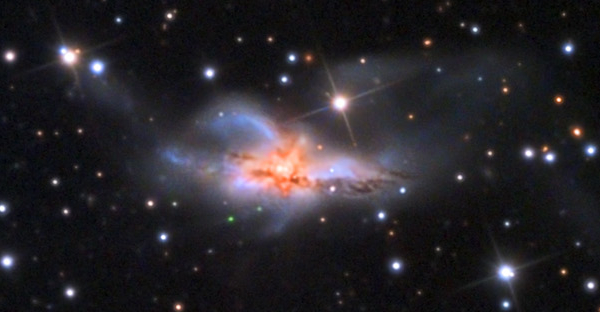
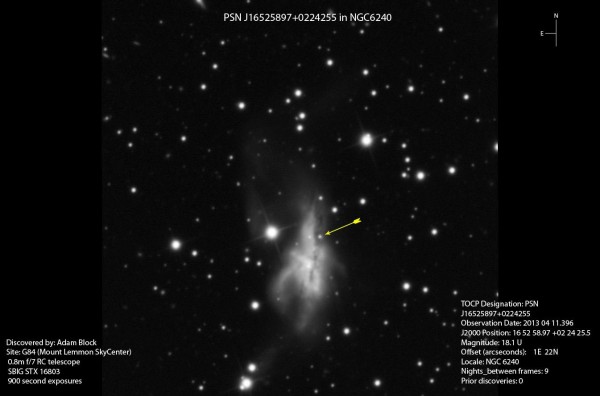
Ethan,
This subject is near and dear to my heart, since I performed a supernova search as part of my dissertation. Let me warn prospective searchers that this is not a job for the faint of heart or short of patience. I observed once every two weeks for about two years, concentrating on galaxies with enhanced star formation rates, and found only 3 SNe in a sample of about 150 galaxies .... and in each case, someone else found it first. Sigh.
By the way, Type Ia are _not_ the most common supernovae in the Milky Way, based on all the evidence. The Milky Way is an Sb or Sc spiral, and surveys of other galaxies (for example,
http://arxiv.org/abs/1006.4613
show clearly that core-collapse supernova occur 2-4 times more frequently than SNe Ia in spirals of this sort.
Michael,
Ah, the bias of basing a conclusion like that on what we've seen for the past few thousand years! That is a very cool study; thanks for sharing!
So Type II supernovae are far less common in Milky Way type galaxies than they are in starburst (or other accelerated SFR) galaxies, but that still outpaces the Type Ias. Interesting!
Probably the greater amount of dust in spiral type galaxies explains that difference. More dust to collapse, bigger stars, more likely they're the size that goes boom because they fall in to themselves.
I *love* hindvision..!